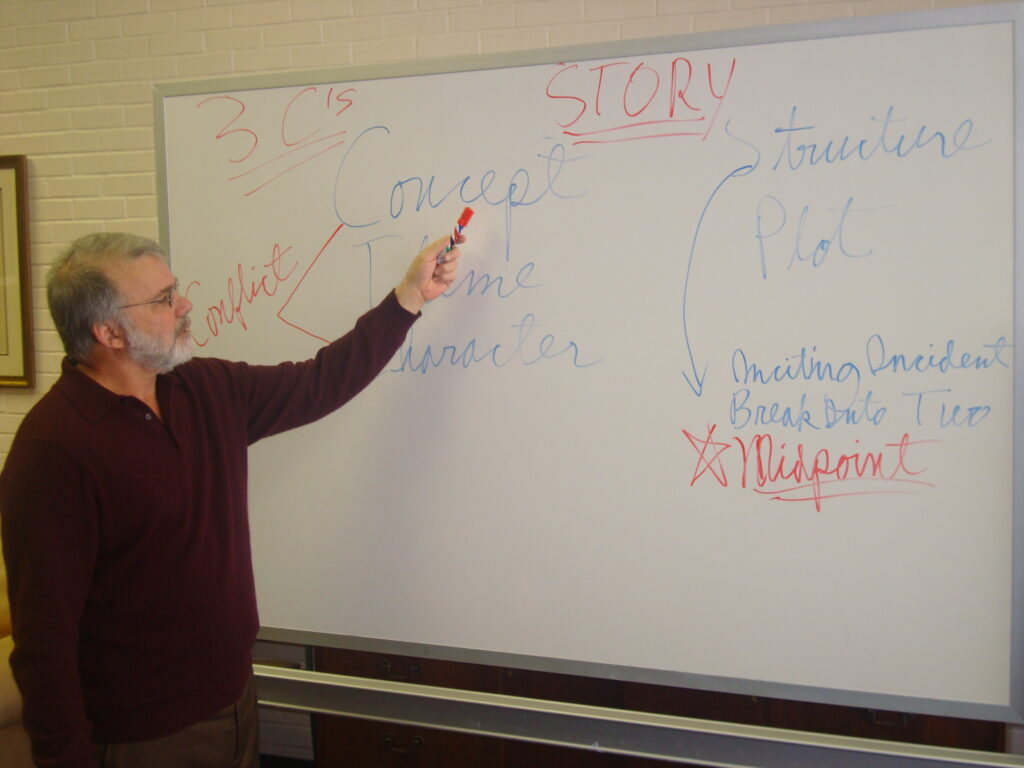
How To Teach Screenwriting
Do you know how to teach screenwriting? There’s nothing more gratifying than teaching the art of screenwriting, to other people. If you’re passionate about the art of screenwriting, then it’s vital that you pass on your skills, to other students who will carry on the craft.
However, in today’s society, many children have been indoctrinated by social media, video games, and all the other things that detract from art and culture. Especially because children are more interested in texting than making art, it’s difficult to capture the attention of your students, in an age that’s dominated by TikTok and other social media sites.
However, if you work hard, you’re sure to be able to capture the attention of all the future Tarantinos and Goldmans out there. When you’re teaching, you could be cultivating the next generation of talent, so you can’t give up on your students.
Here is a list of things that will help you teach screenwriting. By the end, you’ll know how to teach screenwriting and feel more confident in the classroom, because one of the most important things in the world, is the arts. So, students should always have access to art education.
Let’s get into it.
Simply Let Your Students Watch Movies

One of the most important things that filmmakers should do in order to know how to teach screenwriting, is be versed in all of the prolific films that are out there. You’re not going to be able to make a mark on the industry, if you aren’t familiar with the kind of content that exists in the industry.
When you’re familiar with a ton of films, you’re going to have a better point of reference, when it comes to the visual part of films and when it comes to the written part of films. When you can reference important films and talk about them eloquently, you’re also going to make a good impression on future colleagues, too. It’s vital for any filmmaker, regardless of age, to know the ins and outs of film history.
So, when you’re in the classroom, it’s essential that you’re able to show your students films, so that they can begin to collect a catalogue of films that they’re familiar with. However, there is one problem that comes with being a teacher of the cinematic arts, and that is, that parents often fear showing their children movies.
Whether parents are skeptical of violence in movies or they don’t want to expose their kids to a few curse words, the comfortability threshold for all parents, is going to be different. A good way to overcome any barriers with parents, is to make each parent sign a release form, before you watch a movie. This way, parents will know what films their students will be exposed to, and if they have any problem with the content of the movie, they know not to send their student to class that day.
You might even offer an alternative assignment in another classroom, which would permit the students who are not allowed to watch the movie, to do something different. There are always going to be plenty of parents who allow their kids to get versed in cinema and its history, so if you’re a teacher that communicates with the parents, you should be able to get cleared to watch plenty of great films.
Whether you opt for Star Wars, Back to the Future, Ghostbusters, or another film, with the permission of the parents in the class, your students are sure to be able to watch films. Plus, what’s better than forgoing a lecture, to watch a movie instead?
When you get your students looking forward to class by telling them that they’re going to be able to have a movie day, they’re going to be excited. They’re going to begin to love film, because it means a break from teachers talking at them all day.
The point of being a cinema teacher is to get students excited about cinema. So, start with the basics, and show your students the movies that you love. In no time, they’re going to be excited about the movies that you love, too.
Encourage Your Students to Watch Movies in Their Free Time

As a teacher, you only have so many hours with your students. When it comes down to it, the most successful screenwriters out there, are the ones who know a lot about film. So, the only way for your students to become the next Tarantinos, is if they are committed to watching movies in their free time.
Tell your students to get passionate about researching and watching films. Tell them to hone in on a genre that they love, and do a deep dive of the films that are out there. When students are committed to researching, they’re going to be better at their craft, so by looking at the different films that are available, your students are going to be getting more and more knowledgeable, by the day.
Another good idea, is to tell your students to ask their parents what their favorite films are. It’s important for students to know more about films than just the films that are coming out in the contemporary day. Knowing about the films that proceeded us, is important to any filmmaker. So, when your students ask their parents about their favorite films, they’re going to have access to a whole new generation of cinema.
It might even be beneficial to ask your students to ask their grandparents about their favorite films, too. This is a great activity to bring families together, but it’s also a great activity to get students more engaged with films.
As a teacher, one of your duties is to get students excited about watching films out of class, so make it a point to explain how important it is to watch movies after school and on the
weekends. When you do, the committed students will try their hardest to watch films outside of your class.
If You’re Working with Younger Students, Encourage Them to Play with Toys

Most all of the filmmakers out there, were creative when they were younger. And the best way to encourage creativity in children, is to ensure that they’re playing with toys. When many filmmakers were growing up in the 1980s, the toy market was booming. There are so many different toys that became popular, like My Little Pony, Transformers, G.I. Joe, and more. However, unfortunately, many kids these days are more concerned with their phones, than they are playing with toys.
As a cinema instructor, you’ve got to encourage your students to return to playing with toys. In fact, if your students stop playing with toys, it’s almost detrimental to their careers, because they’re going to be less likely to be creative.
When you’re playing with toys, you’re going to be more likely to create narratives to go along with the toys, and as we know, having a good narrative is the key to cinema. You can’t be a screenwriter, if you’re incapable of thinking of stories. And kids first think of stories, when they’re playing with toys.
Encourage Your Student to Think with Pictures

If your students are too old to play with toys, another thing that’s important is to get your students drawing. When you draw, you’re forced to think in pictures, and when you’re trying to be a screenwriter, you’ve got to show, instead of tell.
A common technique that is important for screenwriters to pick up, is the art of storyboarding. When you storyboard, you’re essentially drawing out your story, so that you can get a visual of the frames that you’re interested in shooting.
You can think of it like you would a comic book: storyboards tell the story with both pictures and words. Unlike a script, that is only words, storyboarding will force your students to start to think about what the film will look like, shot by shot. Film is more than just writing, you’ve got to be visual, too.
However, if students are not storyboarding, it’s still important that they are drawing. Drawing keeps you in touch with your creativity, and drawing is also beneficial, if you’re creating fictional worlds in your drawing.
As you’ve probably already figured out, it’s important for teachers to get their students to think creatively. In today’s society, so many students are not drawing anymore, because they’re texting instead. As a screenwriting teacher, you’ve got to intervene in this trend. However, you do it, prove to your students that it’s important to draw and think creatively.
Final Thoughts
If you’re passionate about the art of screenwriting and know how to teach screenwriting, it’s going to be easier to get your students passionate about the art of screenwriting, too. It’s important to remember that the most vital trait that a teacher can have, is a love for what they’re doing.
So, if you’re someone who loves screenwriting, you’re going to be a great teacher to all of the future screenwriters out there.
We hope that this list of tips on how to teach screenwriting has been helpful, and good luck as you pursue a career in education. The future movie-watchers out there thank you for your service!
Related: